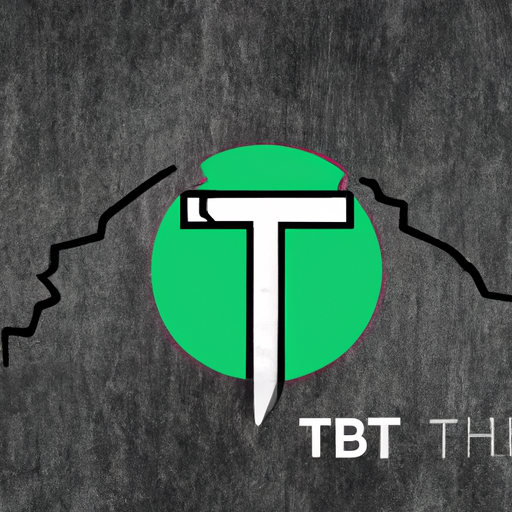The Decline of Tether’s Market Cap Signals a Shrinking Stablecoin Market
Introduction
The cryptocurrency landscape is constantly evolving, with various altcoins emerging and vying for dominance. Among these, stablecoins have gained significant traction due to their ability to offer stability in an otherwise volatile market. Tether, the leading stablecoin, has been at the forefront of this movement for quite some time. However, recent data indicates that Tether’s market cap has experienced a significant dip, marking the end of a nine-month streak of consistent growth. Furthermore, this decline is reflective of a larger trend in the stablecoin market, as it continues to shrink for the 17th consecutive month, according to data from CCData.
The Fall of Tether
Tether, a cryptocurrency pegged to the value of traditional fiat currencies, has long been regarded as a reliable and secure stablecoin option. It has maintained its position as the largest stablecoin in the market, with a steady increase in market cap over the past several months. However, the recent downturn in Tether’s market cap has caught the attention of crypto enthusiasts and industry observers alike.
The decline in Tether’s market cap is believed to be attributed to a variety of factors. One of the main contributors is increased regulatory scrutiny and concerns surrounding the transparency of the stablecoin. Tether has faced significant backlash and legal challenges in the past, which have raised doubts about the true value and backing of its digital assets.
Furthermore, the emergence of new alternative stablecoins has also impacted Tether’s market cap. With the advent of innovative and regulated alternatives, investors have started diversifying their portfolio, opting for stablecoins that offer additional features such as enhanced transparency, decentralized governance, and audits of reserves.
The Shrinking Stablecoin Market
Tether’s decline in market cap is not an isolated event but rather indicative of a broader trend in the stablecoin market. According to CCData, the overall stablecoin market has been shrinking for the past 17 months. This decline suggests a growing preference for alternative options and a shift in investor sentiment towards diverse stablecoin offerings.
While Tether still commands a significant share of the stablecoin market, other contenders have been gaining momentum. Stablecoins such as USD Coin (USDC), Binance USD (BUSD), and DAI have witnessed increased adoption and market cap growth.
The shrinking stablecoin market can be attributed to several factors. Firstly, the growing regulatory concerns surrounding stablecoins have led investors to explore alternatives that offer more transparency and compliance with regulatory standards. Additionally, the broader cryptocurrency market has witnessed an influx of new projects and tokens, presenting users with a wider range of options to diversify their holdings.
Closing Thoughts – An Evolving Landscape
The recent dip in Tether’s market cap serves as a reminder that the cryptocurrency market is a dynamic ecosystem, constantly evolving and adapting to changing circumstances. While Tether’s dominance has faced a setback, it does not necessarily signal the end of its reign. The stablecoin market, with its shrinking overall market cap, reflects a shift in investor preferences and the emergence of new contenders.
As the stablecoin market continues to evolve, the key will be for stablecoin issuers to adapt and innovate to meet the demands of investors. Transparency, compliance, and additional features will play a crucial role in the success and growth of stablecoins moving forward. Only time will tell which stablecoins will emerge as the true market leaders.
Disclaimer: The above writer’s commentary reflects their opinion and does not necessarily represent the views of TopRatedCryptos.com or its affiliates.
